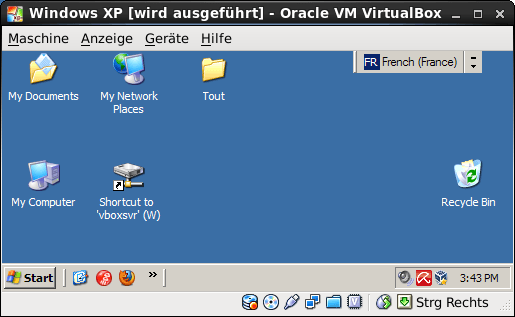
Photo: libre-software.net. License: CC BY-SA 4.0
Install VirtualBox on RHEL, CentOS, AlmaLinux, Rocky Linux or Oracle Linux
Last updated on October 10, 2022
This how-to is about installing VirtualBox on Red Hat Enterprise Linux (RHEL). Provided instructions should also work on CentOS, AlmaLinux, Rocky Linux or Oracle Linux.
It is possible to install VirtualBox from rpm packages, which can be downloaded on the VirtualBox Linux downloads page. However, a yum-style repository is also provided – we’ll use the latter.
Install DKMS, use sudo
Before installing VirtualBox, one should install DKMS, as VirtualBox will build its own kernel module. This howto also supposes that you have added yourself to the sudoers list (of course, you may as well use su or log in as root).
DKMS has some important dependencies like gcc and kernel-devel. Use the following command line to install DKMS and its dependancies:sudo yum install dkms
Install Virtualbox
Once DKMS an its dependencies are installed, we can download and add the repo file to /etc/yum.repos.d/:sudo wget -P /etc/yum.repos.d http://download.virtualbox.org/virtualbox/rpm/rhel/virtualbox.repo
Finally, VirtualBox is ready to install:sudo yum install VirtualBox-6.1
Add yourself to the vboxusers group using the “Users and Groups” application or the command line:sudo usermod -a -G vboxusers your_user_name
It is possible to use VirtualBox without adding yourself (as a user) to the vboxusers group. If you don’t, some functions may be unavailable, as using USB devices on the guest system.
Run Virtualbox
VirtualBox should now be available in the menu or running VirtualBox. Don’t forget to install the non-free Extension Pack via the “File → Preferences → Extensions” menu.

Miscellaneous: USB, Network drives
If you get problems using USB, take a look at the CentOS Wiki. Make sure your user belongs to the usergroup vboxusers.
To share any folder as a network drive, just enter the following command at the MSDOS prompt:net use x: \\vboxsvr\your_shared_folder
By Johannes Eva, April 2012 – October 2022
This article has been linked on LXer.com and some more…
Picture copyright: chameleon with a red hat, detail from this VirtualBox original artwork, unknown license.












10 thoughts on “AVIF browser test page: AVIF support in Chrome, Firefox, Edge…”
Ezgif even does animated AVIFs:
https://ezgif.com/avif-maker
AVIF is now supported in official Firefox 93:
https://www.mozilla.org/en-US/firefox/93.0/releasenotes/
Could you make a similar page for a JPEG XL test?
Thank you for your interest – a JPEG XL test page would be useful, but I have no time left at the moment. Hopefully at some time in 2022 🙂
The following plugin, coupled with the functions.php code mentioned in the post, will allow AVIF images to be uploaded via the Media Library.
https://wordpress.org/plugins/blob-mimes/
Sadly your site need javascript enable for the test avif vs jpeg. If noscript bloc everything, this page say that AVIF is not supported and display JPEG fallback.
In JS dependences there is also google-analytics that is not fair play for a libre-software website :(.
Thank you for your article anyway.
Actually, AVIF/JPEG fallback using the element is pure HTML and does not need Javascript, even on this site. And you’re right, I really should switch from GA to Matomo, it’s a matter of time. Cheers!
Nice article. Love how you included a detailed tutorial for WordPress. I have created a UX optimized converter that support bulk conversion, without the need of uploading files. You can find it on: https://avif.io/
The next update will include a settings panel on which you can edit the quality, effort and exif data.
Feel free to add it to the converter list if you feel like it’s a great addition. Sincerely, Justin
MConverter can convert most image formats to AVIF: https://mconverter.eu/convert/to/avif/
Another nice thing is that it supports batch converting of multiple files at the same time. For the compression it uses a CRF of 10, so the converted images look basically identical.
No option for android
I found this it really helped me and it support batch conversion please add it to the list:
https://play.google.com/store/apps/details?id=ebusky.avif.image.viewer.converter.pdf